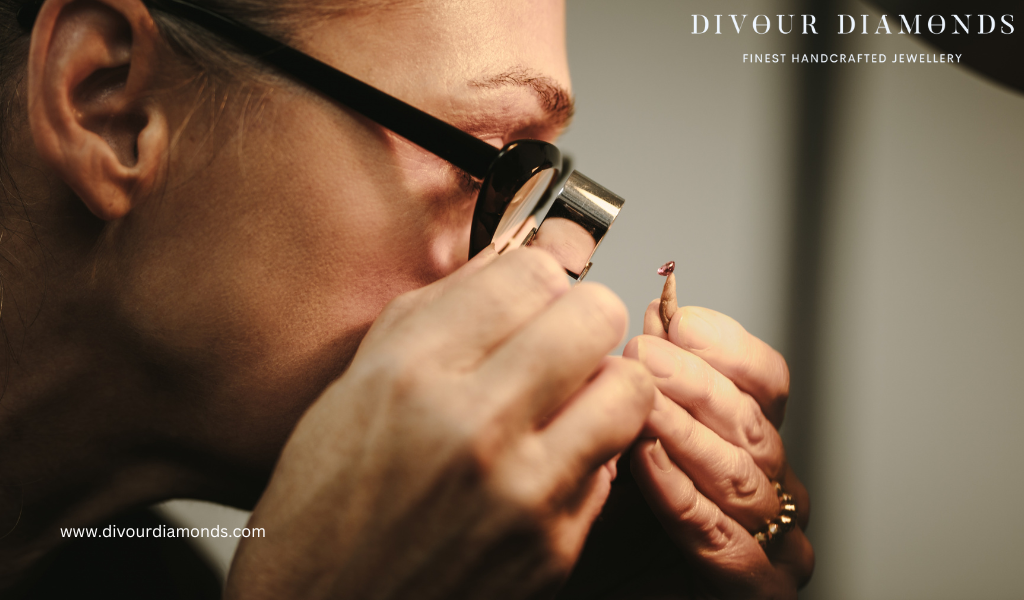In this guide we'll look into nine methods that you may reliably use to tell whether that sparkling slot gacor stone is genuine or just a good imitation. There are simple tests that you can do yourself at home, as well as professional means of verification so that you can spend with confidence.
1. The Water Test
One of the simplest ways to test loose diamonds is the water test. Pour water into a glass, then drop the diamond into it. Real diamonds are denser and will sink to the bottom of the glass immediately. Counterfeits, particularly those made of glass or quartz, may float or sink slowly.
This test is reliable because diamonds have a high density when compared to most imitation materials. But some good fakes like moissanite could pass this test as well, so don't trust it completely.
2. The Fog Test
Breathe on the diamond like you would to fog up a mirror. A genuine diamond loses heat rapidly, and hence, the fog should disappear almost immediately. If it stays foggy for a few seconds, you are probably looking at a fake one.
Natural diamonds have great heat conduction power, whereas imitations tend to hold on for much longer. This quick and simple test can be done anywhere, making it handy when shopping.
3. The Newspaper Test
Put the loose stone on a piece of paper or any reading material. If you can read the letters through the diamond, then it mostly is fake. The truth is that diamonds refract light so deeply that text cannot be seen through them.
The exception is with coloured diamonds, which might allow some visibility depending on their hue and intensity. Experts should examine fancy coloured diamonds for proper authentication.
4. The UV Light Test
When exposed to UV light, most diamonds glow blue, however depending on their composition, some may exhibit various colours or no fluorescence at all. Most imitation diamonds do not fluoresce the same way.
This test requires UV light but is a fairly good indicator when used in conjunction with other methods.
5. The Sparkle Test
A diamond reflects light in a very specific manner. The brilliant light coming off the stone shows all sorts of colourful flashes (called fire). The observer must also check how light interacts with the stone under different lighting conditions.
Real, loose diamonds shine bright with sharp flashes of light. Fake diamonds tend to show more rainbow-like effects or dull reflections. An expert's or trained eye will catch this subtle difference.
6. The Setting and Mount Inspection
You should check the metal setting for the diamond. Good-quality diamonds are usually not set in cheap metals. Look for markings such as 10K, 14K, 18K, 585, 750, 900, PT, or Plat to indicate that it's either gold or platinum.
Reputable jewellers don't put fake stones in very expensive settings, so the mount can be the first verification of the diamond's authenticity.
7. The Weight Test
Diamonds are one of the densest stones. A stone that seems extraordinarily light for its size could be cubic zirconia or one of the several other replicas available on the market. This test is subjective but may be helpful in comparing stones of a similar size.
8. The GIA Certification Check
The best way to be sure that a diamond is real is to make sure it comes with a professional certificate. GIA certified diamonds come with relevant documents that describe the gem's features.
The GIA is the greatest authority when it comes to diamond grading. They issue certificates with a unique number, which can be checked in their database. If someone sells a diamond and claims that it is GIA certified, just request to see the papers and check its authenticity.
9. The Professional Appraisal
If you are still not sure, consult a jeweller or gemologist. They have tools, such as diamond testers, to measure the thermal and electrical conductivity of diamonds to identify whether they are real or not.
Experts will also detect any treatment that may have been given to a low-quality diamond to enhance its look. Such treatments will not render a diamond fake, but they do impact its value.
To Sum Up
It takes some testing and sometimes professional help to identify genuine loose diamonds. While these nine methods can help you spot obvious fakes, the diamond market has become increasingly sophisticated with imitations.
FAQs
1. Which typical diamond substitutes are capable of passing certain tests?
Cubic zirconia, moissanite, and white sapphire are imitation stones that can look very real. Some stones may pass through these tests, thus making identifying by professionals a must.
2. How can you determine the authenticity of a diamond at home?
You can carry out simple tests like the fog test, the water test, and the newspaper test. These tests can give quick indications but are not always trustworthy; better to get a professional assessment.

